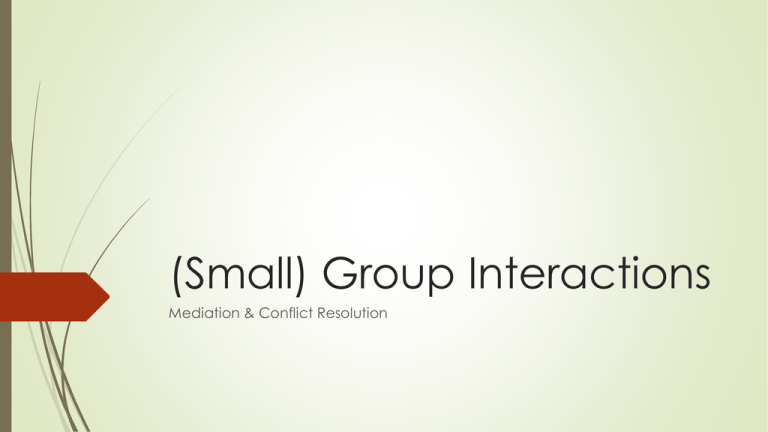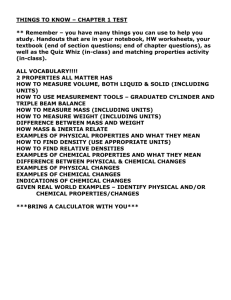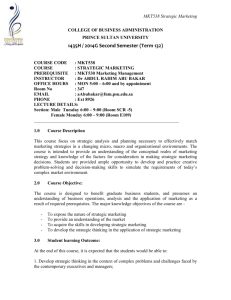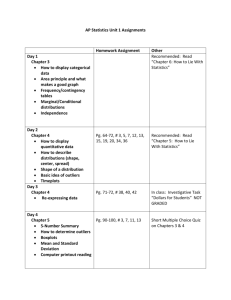Small Group Interactions PPT 2.16.2015
advertisement

(Small) Group Interactions Mediation & Conflict Resolution Recap: What is mediation and conflict resolution? What are our personality types? How do we identify and deal with others’ personality and communication types? Developing empathy and sympathy towards others Developing listening skills Identifying and addressing stereotypes: gender, race, age, and classmates’ personal experiences Small Group Communication Group (Definition): collection of individuals who are connected to one another by some common purpose, are interdependent, have some degree of organization, and see themselves as a group Collection of individuals Common purpose Interdependence Organization Self-perception Small Group Communication - Stages 1. Opening: getting acquainted, introductions 2. Feed forward: identifying tasks and group roles 3. Business: working on task and problem solving 4. Feedback: reflect on work done, discuss remaining tasks 5. Closing: closing comments Why do people join groups? Hierarchy of Needs (Maslow, 1954) Belongingness / social needs: sense of belonging to a group Esteem: one’s self worth dependent on being a part of a group and being accepted by that group Self-actualization: fulfilling one’s potential and becoming a better individual through group interaction and success Theory of Interpersonal Needs (Schutz, 1966) Inclusion: sense of belonging Control: making the choice to join Affection: relating to others’ choices, interests Also: looking for shared interests and beliefs Question: Is it better to have similar group members or diverse group members? Similar Group Members: Positive: Better understanding of each other Agree on more issues (less conflict) Quicker decision making process Negative: Limited perspectives Limited experiences Inhibited creativity and production? Diverse group members: Positive: Different approaches to problems Access to different sources of information Different experiences Increased problem-solving and decision making abilities Increased creativity and innovation Negative: Possible existence of prejudgment and stereotypes Increased emotional tension and conflict In-class activity: When does a collection of people become “a group”? Class divides into 5-6 groups Task: complete puzzle as fast as possible One participant-observer per group (note task and social functions) In-class activity: When does a collection of people become “a group”? Questions for the Participant-Observer: Talking within group? Was the talk task-specific, or about other things? Did group members discover commonalities among themselves? Did a leader emerge? How? Did everyone participate, or did some appear withdrawn? Was there any disruptive behavior? Did the group work together as a team, or as individuals working on the task? Group Interaction Process Analysis (Bales, 1950) Understand how groups work by analyzing interactions occurring within them 12 categories that describe possible group interactions: 1. Shows solidarity 2. Shows antagonism, deflates other’s status 3. Shows tension release 4. Shows tension, withdraws from field 5. Agrees, concurs (passive) 6. Disagrees, shows passive rejection 7. Gives suggestions and directions 8. Asks for suggestions and directions 9. Gives opinion, evaluation, analysis 10. Asks for opinion, evaluation, analysis 11. Gives orientation, information 12. Asks for orientation, information In-class activity: When does a collection of people become “a group”? Reflect on YOUR behavior during the puzzle activity Relate behavior to Bates’ Group Interaction Process Analysis What are some benefits of working in groups? What are some obstacles of working in groups? For next class: TOPIC: Small Group Communication (Continued), Power and Conflict In-class activity REMINDERS: please complete your weekly journals REMINDER: No class on Monday 2/23 (I will be at a conference)




